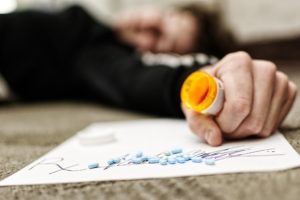The opioid crisis has emerged as a significant public health concern, affecting millions of lives worldwide. In this complete comprehensive guide, we delve into the causes, impacts, and potential solutions to this devastating crisis.
Understanding Opioids
Understanding opioids refers to having knowledge and awareness about this class of drugs. Opioids are a category of substances that include prescription painkillers like oxycodone, hydrocodone, and illegal drugs such as heroin. Understanding opioids entails comprehending their mechanisms of action, potential side effects, risks of addiction and dependence, and the impact they have on individuals and communities.
To understand opioids, one must be familiar with how they interact with opioid receptors in the brain and central nervous system, leading to pain relief and, in some cases, euphoria. Additionally, understanding the potential dangers associated with opioids, such as the risk of overdose and the development of substance use disorders, is crucial.
Moreover, understanding opioids involves being aware of the factors that contribute to the opioid crisis, such as overprescribing, aggressive marketing by pharmaceutical companies, limited access to alternative pain management options, and the emergence of potent synthetic opioids like fentanyl. Understanding the socioeconomic and psychological factors that can influence opioid misuse and addiction is also important.
To address the opioid crisis effectively, it is essential to have a comprehensive understanding of opioids. This includes recognizing the signs and symptoms of opioid addiction, understanding the available treatment options, and promoting education and awareness to prevent misuse and promote safe medication practices.
Ultimately, understanding opioids empowers individuals, healthcare professionals, policymakers, and communities to take informed actions in combatting the opioid crisis, supporting those affected by addiction, and promoting safer and healthier approaches to pain management.
The Scope of the Opioid Crisis
The scope of the opioid crisis is extensive and far-reaching, with significant impacts on individuals, families, communities, and society as a whole. The crisis has reached alarming proportions, both in terms of the number of lives lost and the widespread prevalence of opioid addiction. Here are some key aspects that illustrate the scope of the opioids crisis:
Opioid-Related Deaths:
The crisis has resulted in a staggering number of overdose deaths. In the United States alone, since the late 1990s, over 500,000 lives have been lost due to opioid overdoses. These deaths continue to rise, with opioids becoming the leading cause of drug overdose fatalities.
Addiction Rates:
Opioid addiction rates have skyrocketed in recent years. Many individuals who were originally prescribed opioids for legitimate medical purposes have become dependent on them, leading to addiction. The highly addictive nature of opioids makes it challenging for individuals to stop using them without proper support and treatment.
Prescription Opioid Misuse:
The crisis has been fueled by the overprescribing of opioids for pain management. Many healthcare professionals have prescribed opioids at higher doses or for longer durations than necessary, leading to an increase in the availability of these drugs in communities. This overprescribing has contributed to the development of opioid addiction.
Heroin and Synthetic Opioids:
The crisis has expanded beyond prescription opioids to include the use of illegal opioids like heroin and the emergence of potent synthetic opioids like fentanyl. Heroin use often arises as individuals transition from prescription opioids to illegal substances, seeking a more affordable and accessible alternative. Synthetic opioids, particularly fentanyl, have caused a significant increase in overdose deaths due to their potency.
Social and Economic Consequences:
The opioids crisis has had profound social and economic ramifications. Families and communities bear the brunt of the crisis, experiencing the loss of loved ones, strained relationships, and the erosion of social fabric. The burden on healthcare systems, criminal justice systems, and social services is substantial, with increased costs and limited resources to address the crisis effectively.
Stigma and Barriers to Treatment:
Stigma associated with opioid addiction poses significant challenges for individuals seeking help. The fear of judgment and discrimination prevents many from accessing appropriate treatment and support services. Stigma also hampers public awareness and understanding of addiction as a medical condition, hindering efforts to address the crisis comprehensively.
Global Impact:
The opioids crisis extends beyond national borders, affecting countries worldwide. While the severity may vary, many nations are grappling with rising rates of opioid addiction and overdose deaths. The crisis requires global collaboration and coordinated efforts to address its underlying causes and mitigate its impacts.
In summary, the scope of the opioids crisis is extensive and multifaceted, encompassing the loss of countless lives, soaring addiction rates, overprescribing practices, the presence of illegal opioids, societal consequences, stigma, and its global reach. Tackling this crisis demands a comprehensive and concerted approach from various stakeholders to prevent further harm and provide effective support and treatment to those affected
Causes and Contributing Factors of the Opioids Crisis
The opioids crisis is a complex issue with multiple causes and contributing factors that have collectively fueled its growth. Understanding these causes is crucial for developing effective strategies to address the crisis. Here are some key causes and contributing factors:
Overprescription of Opioids:
One of the primary drivers of the opioids crisis is the overprescribing of opioid medications for pain management. In the past, opioids were often prescribed more liberally, leading to a significant increase in their availability and subsequent misuse.
Aggressive Marketing by Pharmaceutical Companies:
Pharmaceutical companies played a role in the crisis by aggressively marketing prescription opioids, often downplaying their addictive potential. Misleading information about the safety and effectiveness of these drugs contributed to increased prescribing rates.
Limited Access to Alternative Pain Management:
Insufficient access to alternative pain management options, such as physical therapy, non-opioid medications, and psychological interventions, led healthcare providers to rely heavily on opioids for pain relief. Limited availability of these alternatives in certain areas perpetuated the cycle of overprescribing.
Socioeconomic Factors:
Economic disparities and social factors contribute to the opioids crisis. Individuals in lower socioeconomic groups may face higher rates of unemployment, poverty, and limited access to healthcare, which can increase vulnerability to substance abuse and addiction.
Prescription Drug Diversion:
Prescription drug diversion occurs when legally prescribed opioids are illegally obtained and redistributed. This can happen through doctor shopping (visiting multiple healthcare providers for prescriptions), theft, or the black market. Diversion increases the availability of opioids for non-medical use.
Prescription Drug Monitoring Programs (PDMPs):
Inadequate implementation or utilization of PDMPs, which track controlled substance prescriptions, can contribute to the crisis. Inconsistent monitoring and insufficient communication between healthcare providers can allow for the overprescribing and misuse of opioids.
Development of Synthetic Opioids:
The emergence of potent synthetic opioids, such as fentanyl, has intensified the crisis. Illicitly manufactured fentanyl and its analogs are often mixed with other drugs, leading to a higher risk of overdose due to their increased potency.
Socio-cultural Factors:
Societal attitudes towards pain management and expectations for quick relief can influence opioid prescribing practices. A cultural emphasis on pain elimination and the belief that opioids are a panacea for pain contribute to overreliance on these medications.
Trauma and Mental Health Disorders:
Individuals with a history of trauma, mental health disorders, or previous substance abuse are at higher risk of developing opioid addiction. The use of opioids to self-medicate underlying psychological pain or to cope with traumatic experiences can lead to dependency.
Lack of Comprehensive Addiction Treatment:
Limited access to evidence-based addiction treatment and rehabilitation services hinders recovery efforts. Insufficient availability of medication-assisted treatment, counseling, and support programs contributes to the cycle of addiction.
Addressing the opioids crisis requires a multifaceted approach that addresses these causes and contributing factors. This includes improving prescribing practices, implementing effective prescription drug monitoring programs, promoting alternative pain management options, enhancing access to comprehensive addiction treatment, raising awareness about the risks of opioids, and addressing socioeconomic factors that contribute to vulnerability.
Opioid Crisis Impact on Society
The opioids crisis has had a profound impact on society, affecting individuals, families, communities, and various sectors. The far-reaching consequences of the crisis highlight the urgent need for comprehensive solutions. Here are some key impacts of the opioids crisis on society:
Loss of Lives:
The most devastating impact of the crisis is the loss of lives. Opioid overdose deaths have skyrocketed, leading to a staggering number of fatalities. The loss of loved ones has a profound emotional and psychological impact on families and communities.
Health Burden:
Opioid addiction and misuse place a significant burden on healthcare systems. Individuals struggling with opioid addiction often require medical interventions, rehabilitation programs, and ongoing support. The strain on healthcare resources limits the availability of services for other health issues.
Increased Crime Rates:
Opioid addiction can drive individuals to engage in criminal activities to fund their drug use. Property crimes, theft, and drug-related offenses often escalate as individuals seek to sustain their addiction. This places additional strain on law enforcement agencies and the criminal justice system.
Economic Consequences:
The opioids crisis has substantial economic ramifications. Lost productivity, healthcare costs, increased law enforcement expenses, and the burden on social services all contribute to the economic impact. Communities grappling with the crisis may experience decreased economic growth and higher social welfare expenditures.
Strained Social Services:
The crisis places a burden on social service agencies, including child welfare systems. Substance abuse and addiction can lead to neglect or abuse of children, resulting in increased demand for child protective services. The system may struggle to provide adequate support and intervention for affected families.
Disruption of Communities:
The opioids crisis fractures communities, eroding social fabric and trust. The loss of lives, increased crime rates, and strained relationships can create divisions and a sense of insecurity within communities. The crisis undermines community cohesion and solidarity.
Stigma and Discrimination:
Individuals affected by opioid addiction often face stigmatization and discrimination. The societal perception of addiction as a moral failing rather than a medical condition can lead to isolation, shame, and limited access to support services. Stigma hampers recovery and perpetuates the cycle of addiction.
Impact on Children and Families:
Children in families affected by opioid addiction face significant challenges. They may experience neglect, instability, trauma, and disruptions to their education and overall development. The long-term effects on these children can perpetuate cycles of addiction and have intergenerational impacts.
Strain on First Responders:
First responders, including paramedics, police officers, and firefighters, face increased demands and risks due to the opioids crisis. Responding to overdose emergencies and dealing with the associated challenges place physical, emotional, and financial burdens on these professionals and their organizations.
Public Perception and Policy Response:
The opioids crisis has prompted a reevaluation of public attitudes and policies surrounding addiction and substance abuse. The crisis has highlighted the need for comprehensive prevention, treatment, and harm reduction approaches. It has also sparked discussions on the appropriate regulation of pharmaceutical companies and the importance of community engagement.
Addressing the impacts of the opioids crisis requires collaborative efforts from various sectors, including healthcare, law enforcement, social services, and community organizations. Comprehensive approaches that focus on prevention, education, harm reduction, and access to effective treatment and support services are vital to mitigate the devastating impact on society.
Opioid Overdose Prevention and Treatment
Opioid overdose prevention and treatment are critical components in addressing the opioids crisis and reducing the associated fatalities. Comprehensive strategies focus on both preventing overdoses from occurring and ensuring that individuals experiencing an overdose receive immediate medical attention. Here are key approaches to opioids overdose prevention and treatment:
Naloxone Distribution:
Naloxone is an opioid overdose reversal medication that rapidly reverses the effects of an opioid overdose and restores breathing. Increasing access to naloxone is crucial. Distribution programs train individuals, including first responders, healthcare providers, and family members of individuals at risk, on naloxone administration and provide them with naloxone kits.
Harm Reduction Programs:
Harm reduction initiatives aim to reduce the negative consequences of drug use while recognizing the reality that some individuals may continue to use opioids. These programs may include supervised consumption sites, where individuals can use drugs under medical supervision, safe needle exchange programs, and outreach services that provide education, resources, and support.
Education and Awareness:
Public education campaigns play a vital role in preventing opioid overdoses. These initiatives raise awareness about the risks associated with opioid use, signs of an overdose, and the importance of timely intervention. Education efforts also focus on promoting safe medication practices, proper storage and disposal of opioids, and the availability of naloxone.
Prescription Drug Monitoring Programs (PDMPs):
PDMPs are electronic databases that track controlled substance prescriptions. Healthcare providers can use PDMPs to identify patients at risk of opioid overdose by identifying individuals who are receiving multiple prescriptions from different providers or exhibiting other patterns of misuse. PDMPs help identify and intervene early to prevent overdose.
Medication-Assisted Treatment (MAT):
MAT combines medications, such as methadone, buprenorphine, or naltrexone, with counseling and behavioral therapies. MAT is effective in treating opioid addiction and reducing the risk of overdose. Access to MAT should be expanded to ensure that individuals with opioid use disorder have comprehensive treatment options.
Access to Treatment and Recovery Support:
Ensuring that individuals have timely access to evidence-based addiction treatment and recovery support is crucial. Treatment programs may include inpatient or outpatient rehabilitation, counseling, peer support, and mental health services. Providing a continuum of care that addresses the physical, psychological, and social aspects of addiction is essential.
Integration of Primary Care and Behavioral Health Services:
Coordinating primary care and behavioral health services can improve outcomes for individuals with opioid use disorder. Integration allows for comprehensive and holistic care, addressing both addiction and underlying physical and mental health conditions. This approach enhances the effectiveness of treatment and reduces the risk of relapse and overdose.
Peer Support and Community Engagement:
Peer support programs connect individuals in recovery with others who have lived experience with opioid addiction. Peer support can provide empathy, encouragement, and guidance throughout the recovery journey. Community engagement efforts, including support groups and community-based organizations, promote social connection and reduce isolation.
Dual Diagnosis Treatment:
Many individuals with opioid use disorder have co-occurring mental health disorders. Dual diagnosis treatment addresses both addiction and mental health conditions concurrently, ensuring that individuals receive comprehensive care tailored to their specific needs.
Policy and Legislative Measures:
Governments play a crucial role in implementing policies and legislation that support overdose prevention and treatment. This includes expanding access to naloxone, removing barriers to MAT, implementing prescription drug monitoring programs, and allocating funding for prevention, treatment, and recovery support services.
By implementing these strategies, communities can reduce opioid overdose deaths, improve access to treatment and recovery support, and provide individuals with the tools and resources needed to overcome opioid addiction. Opioid overdose prevention and treatment are essential components of a comprehensive response to the opioids crisis.
Government Response Associated With the Opioid Crisis
The opioid crisis has prompted governments at various levels to respond with comprehensive strategies aimed at addressing the crisis and mitigating its impact. Government responses to the opioids crisis typically involve a combination of policy changes, legislation, funding allocation, and coordination among different agencies. Here are key elements of government responses to the opioids crisis:
Public Health Initiatives:
Governments have launched public health campaigns to raise awareness about the risks of opioid use, signs of addiction, and available treatment options. These initiatives aim to educate the public, healthcare providers, and other stakeholders about the crisis and promote prevention measures.
Prescription Drug Monitoring Programs (PDMPs):
Governments have implemented or strengthened PDMPs, which are electronic databases that track controlled substance prescriptions. PDMPs help identify individuals at risk of overuse, identify prescribing patterns, and facilitate intervention to prevent prescription drug misuse and diversion.
Regulation and Oversight:
Governments have taken regulatory actions to address the crisis. This includes strengthening regulations around opioid prescribing practices, enhancing oversight of pharmaceutical companies, and implementing measures to prevent fraudulent practices and illegal distribution of opioids.
Expansion of Treatment Services:
Governments have prioritized the expansion of access to evidence-based treatment services for individuals with opioid use disorder. This includes increasing funding for treatment programs, promoting medication-assisted treatment (MAT), and reducing barriers to accessing treatment, such as insurance coverage and waiting lists.
Naloxone Distribution:
Governments have supported initiatives to increase access to naloxone, an opioid overdose reversal medication. This includes distributing naloxone kits to first responders, healthcare providers, community organizations, and individuals at risk of experiencing or witnessing an overdose.
Criminal Justice Reforms:
Governments have implemented reforms to address the treatment needs of individuals with substance use disorders who are involved in the criminal justice system. This includes diversion programs that offer treatment instead of incarceration and alternatives to incarceration for low-level drug offenses.
Coordination and Collaboration:
Governments have emphasized the importance of coordination and collaboration among different agencies and stakeholders involved in addressing the opioids crisis. This includes establishing task forces, interagency collaborations, and partnerships with healthcare providers, community organizations, and law enforcement agencies.
Research and Surveillance:
Governments have invested in research and surveillance efforts to better understand the opioids crisis, monitor trends, and evaluate the effectiveness of interventions. This data-driven approach helps inform policy decisions and allocate resources effectively.
Funding Allocation:
Governments have allocated significant funding to support initiatives aimed at addressing the opioids crisis. This includes funding for prevention programs, treatment services, research, naloxone distribution, and community-based organizations working on the front lines of the crisis.
Legislative Changes:
Governments have passed legislation to address various aspects of the crisis. This includes laws to regulate opioid prescribing practices, limit opioid quantities, improve access to addiction treatment, strengthen enforcement against illicit opioid trafficking, and support harm reduction initiatives.
Government responses to the opioids crisis continue to evolve as the understanding of the crisis deepens. The ongoing commitment to addressing the crisis through policy, legislation, funding, and coordination is vital to effectively combat the opioids crisis and support individuals and communities affected by it.
Addressing Stigma Associated With the Opioid Crisis
Addressing the stigma associated with the opioid crisis is crucial for creating a supportive environment that encourages individuals to seek help, reduces barriers to treatment, and promotes empathy and understanding. Here are key strategies for addressing stigma related to the opioids crisis:
Education and Awareness:
Promote education and awareness campaigns to disseminate accurate information about opioids, addiction, and recovery. These campaigns can challenge misconceptions and stereotypes surrounding addiction and emphasize that it is a treatable medical condition rather than a moral failing.
Language Matters:
Encourage the use of person-first language when discussing individuals with opioid addiction. Emphasize that addiction does not define a person’s entire identity and that they are deserving of compassion and support.
Storytelling and Personal Narratives:
Share personal stories of individuals in recovery, their challenges, and their successes. Personal narratives help humanize the issue, challenge stereotypes, and inspire empathy and understanding.
Media Representation:
Encourage responsible and balanced media coverage of the opioids crisis. Promote accurate portrayals of individuals with addiction, highlighting their journey, treatment, and recovery, rather than perpetuating negative stereotypes or focusing solely on the negative aspects.
Support Peer-Led Initiatives:
Foster and support peer-led initiatives that provide a platform for individuals in recovery to share their experiences and provide support to others. Peer support helps reduce stigma by demonstrating that recovery is possible and that individuals with addiction can lead fulfilling lives.
Healthcare Provider Training:
Provide education and training to healthcare providers on addiction, stigma, and person-centered care. Empower them to deliver non-judgmental and compassionate care to individuals seeking help for opioid addiction.
Promote Harm Reduction:
Emphasize the importance of harm reduction strategies, such as naloxone distribution, needle exchange programs, and safe consumption sites. Highlight that harm reduction is a compassionate approach that saves lives and supports individuals in their journey towards recovery.
Involve Community Organizations:
Collaborate with community organizations, including advocacy groups, nonprofits, and faith-based organizations, to address stigma. These organizations can play a vital role in raising awareness, providing support services, and advocating for policy changes.
Legislation and Policy Changes:
Advocate for legislative and policy changes that address stigma, promote access to treatment, and protect the rights of individuals with addiction. These changes may include anti-discrimination laws, insurance coverage for addiction treatment, and funding for stigma reduction initiatives.
Engage All Stakeholders:
Encourage collaboration among various stakeholders, including government agencies, healthcare providers, community organizations, schools, law enforcement, and individuals with lived experience. By working together, a comprehensive and unified approach can be developed to tackle stigma and promote a compassionate response to the opioids crisis.
Addressing stigma requires long-term commitment and a collective effort from society as a whole. By challenging stereotypes, promoting understanding, and providing support, we can create an environment that fosters empathy, reduces barriers to treatment, and supports individuals on their journey to recovery
Collaborative Efforts Associated With the Opioid Crisis
Addressing the opioid crisis requires collaborative efforts from various sectors and stakeholders to develop comprehensive solutions. By working together, these collaborative efforts can enhance prevention, treatment, support services, and overall community response. Here are key collaborative efforts associated with the opioids crisis:
Government Agencies:
Government agencies at the local, state, and national levels play a crucial role in coordinating and implementing strategies to address the opioids crisis. Collaboration among agencies such as health departments, law enforcement, education departments, and social services is essential for a coordinated response.
Healthcare Providers:
Collaboration among healthcare providers is vital to ensure a comprehensive approach to prevention, treatment, and recovery. This includes collaboration between primary care physicians, addiction specialists, mental health professionals, pharmacists, and other healthcare providers involved in the continuum of care.
Community Organizations:
Community organizations, including nonprofit groups, faith-based organizations, and grassroots initiatives, are essential partners in addressing the opioids crisis. These organizations often have deep connections within the community and can provide vital support services, prevention programs, and advocacy efforts.
Law Enforcement Agencies:
Collaboration between law enforcement agencies and the healthcare community is critical for an effective response. This includes partnerships to combat the illegal distribution of opioids, diversion of prescription drugs, and targeted enforcement efforts while also promoting diversion programs and treatment options for individuals with substance use disorders.
Education and Prevention:
Collaboration between educational institutions, such as schools and universities, and healthcare providers is important for implementing prevention programs. Education on the risks associated with opioids, proper medication use, and early intervention can be integrated into school curricula and community outreach initiatives.
Research and Data Sharing:
Collaboration among researchers, academic institutions, and public health agencies is essential to generate evidence-based approaches to address the opioids crisis. Sharing data, research findings, and best practices helps inform policies, interventions, and treatment protocols.
Peer Support Networks:
Peer support networks, consisting of individuals with lived experience of addiction and recovery, play a significant role in providing support, empathy, and guidance. Collaborative efforts involving peer support networks can help individuals in recovery navigate the challenges they face and reduce feelings of isolation.
Pharmaceutical Industry:
Collaboration with the pharmaceutical industry is important to address responsible prescribing practices, develop alternative pain management options, and support medication-assisted treatment. Working together, stakeholders can promote safer and more effective use of opioids while exploring non-opioid treatment alternatives.
Public-Private Partnerships:
Public-private partnerships facilitate collaboration between government agencies, healthcare providers, community organizations, and private entities. These partnerships can leverage resources, expertise, and innovation to develop and implement comprehensive solutions to the opioids crisis.
Family and Support Systems:
Collaboration with families, support systems, and individuals affected by addiction is vital. Engaging families in treatment planning, providing support services, and educating them on how to respond to overdose situations can help create a supportive environment for recovery.
Collaborative efforts associated with the opioids crisis require open communication, shared goals, and coordinated actions. By working together, these collaborations can maximize resources, expertise, and community support to address the complex challenges posed by the opioids crisis and promote positive outcomes for individuals, families, and communities.
Education and Awareness Associated With the Opioid Crisis
Education and awareness initiatives play a critical role in addressing the opioid crisis by informing the public, healthcare providers, and communities about the risks associated with opioids, promoting prevention measures, and reducing stigma. Here are key aspects of education and awareness efforts associated with the opioids crisis:
Public Awareness Campaigns:
Government agencies, healthcare organizations, and community groups develop and implement public awareness campaigns to educate the general public about the dangers of opioids, signs of addiction, and available resources. These campaigns use various channels, including media, social media, and community events, to reach a wide audience.
School-Based Education:
Schools play a vital role in educating students about the risks of opioid use. Health curricula can include age-appropriate lessons on the dangers of prescription drug misuse, the addictive nature of opioids, and strategies for making healthy decisions. Guest speakers, workshops, and peer-led initiatives can further enhance education efforts.
Healthcare Provider Training:
Training programs for healthcare providers, including physicians, nurses, and pharmacists, emphasize safe prescribing practices, early identification of opioid use disorder, and effective pain management alternatives. Continuing education programs update providers on the latest research and guidelines related to opioids.
Prescription Drug Education:
Efforts focus on educating patients and the public about the safe use, storage, and disposal of prescription opioids. This includes providing clear instructions on proper medication use, discussing potential side effects and risks, and highlighting the importance of communication between patients and healthcare providers.
Community Workshops and Events:
Community organizations and healthcare providers host workshops, seminars, and community events to raise awareness about the opioids crisis. These events offer opportunities for individuals to learn about prevention strategies, treatment options, and support services available in their community.
Informational Resources:
Developing and distributing informational resources such as brochures, pamphlets, fact sheets, and online materials is essential. These resources provide accurate information on opioids, addiction, treatment options, and local resources for individuals and families seeking help.
Collaboration with Media:
Collaborating with media outlets is crucial for disseminating accurate and balanced information about the opioids crisis. Engaging with journalists, providing expert interviews, and sharing personal stories of recovery can help shape media narratives and reduce sensationalism or stigma associated with addiction.
Peer Education:
Peer education programs enlist individuals with lived experience of addiction and recovery to share their stories and provide education on opioids and addiction. These programs can be conducted in schools, community centers, treatment facilities, and other settings, fostering empathy and promoting understanding.
Online Resources and Helplines:
Establishing online platforms and helplines dedicated to providing information, resources, and support for individuals affected by the opioids crisis is essential. These resources can offer access to educational materials, treatment locators, helpline services, and connections to support networks.
Cultural Competence:
Recognizing and addressing the diverse cultural factors that influence perceptions of opioids and addiction is crucial. Tailoring education and awareness efforts to different cultural and linguistic communities helps ensure that information reaches all segments of the population effectively.
Education and awareness initiatives aim to empower individuals with knowledge, debunk myths, reduce stigma, and encourage proactive measures to prevent opioid misuse and addiction. By increasing awareness and understanding, these efforts can save lives, promote early intervention, and support individuals and communities in combating the opioids crisis.
Supporting Communities Associated With Opioids Crisis
Supporting communities affected by the opioids crisis is crucial for promoting prevention, treatment, recovery, and overall well-being. Here are key ways to support communities impacted by the opioids crisis:
Accessible Treatment Services:
Ensure that communities have sufficient and accessible treatment services for individuals with opioid use disorder. This includes increasing the availability of evidence-based treatment options such as medication-assisted treatment (MAT) and counseling services.
Community-Based Prevention Programs:
Develop and support community-based prevention programs that educate individuals, families, and community organizations about the risks of opioids and provide resources for prevention. These programs can include awareness campaigns, workshops, and community events.
Supportive Housing:
Provide supportive housing options for individuals in recovery from opioid addiction. Stable and safe housing is critical for maintaining recovery and reducing the risk of relapse.
Mental Health Services:
Recognize the co-occurring nature of mental health disorders and substance use disorders. Ensure that communities have access to integrated mental health and substance abuse services to address the complex needs of individuals affected by opioids.
Peer Support Networks:
Foster peer support networks within communities by promoting the formation of support groups and recovery communities. Peer support offers empathy, understanding, and guidance to individuals in recovery and their families.
Community Education:
Conduct community education programs to increase awareness about opioids, addiction, and available resources. Empower community members with knowledge and equip them to recognize signs of addiction, respond to overdoses, and provide support to individuals and families affected by opioids.
Resource Navigation:
Establish resource navigation services to help individuals and families navigate the complex healthcare system and connect them with appropriate treatment, counseling, and support services. These services can guide individuals to available resources and facilitate access to care.
Family Support Programs:
Develop support programs that specifically address the needs of families affected by the opioids crisis. These programs can provide education, counseling, and support groups to help families cope with the challenges associated with addiction and promote family healing.
Employment and Vocational Training:
Offer employment and vocational training programs tailored to individuals in recovery. These programs can help individuals rebuild their lives, regain independence, and establish stable financial situations, reducing the risk of relapse.
Community Partnerships:
Forge partnerships among government agencies, healthcare providers, community organizations, and businesses to collaborate on addressing the opioids crisis. By pooling resources, expertise, and support, communities can develop comprehensive approaches to prevention, treatment, and recovery.
Stigma Reduction:
Conduct stigma reduction campaigns and activities to create a supportive and non-judgmental environment for individuals and families affected by opioids. These efforts can include storytelling, community forums, and awareness campaigns that humanize the experiences of those affected by addiction.
Trauma-Informed Care:
Promote trauma-informed care approaches that recognize the potential trauma experienced by individuals affected by opioids. Training healthcare providers, community workers, and first responders on trauma-informed care principles can create an environment of understanding and compassion.
Supporting communities impacted by the opioids crisis requires a multi-faceted approach that addresses the complex needs of individuals and fosters community resilience. By providing accessible treatment, prevention programs, support services, and community partnerships, communities can empower individuals and families to overcome the challenges associated with opioids and work towards recovery and well-being.
Conclusion:
The opioid crisis demands urgent attention and concerted efforts from all sectors of society. By understanding the causes, effects, and potential solutions, we can work together to mitigate the devastating impacts of this public health crisis. Let us strive for a future where addiction is treated with empathy, and lives are saved through complete comprehensive support and effective interventions.





